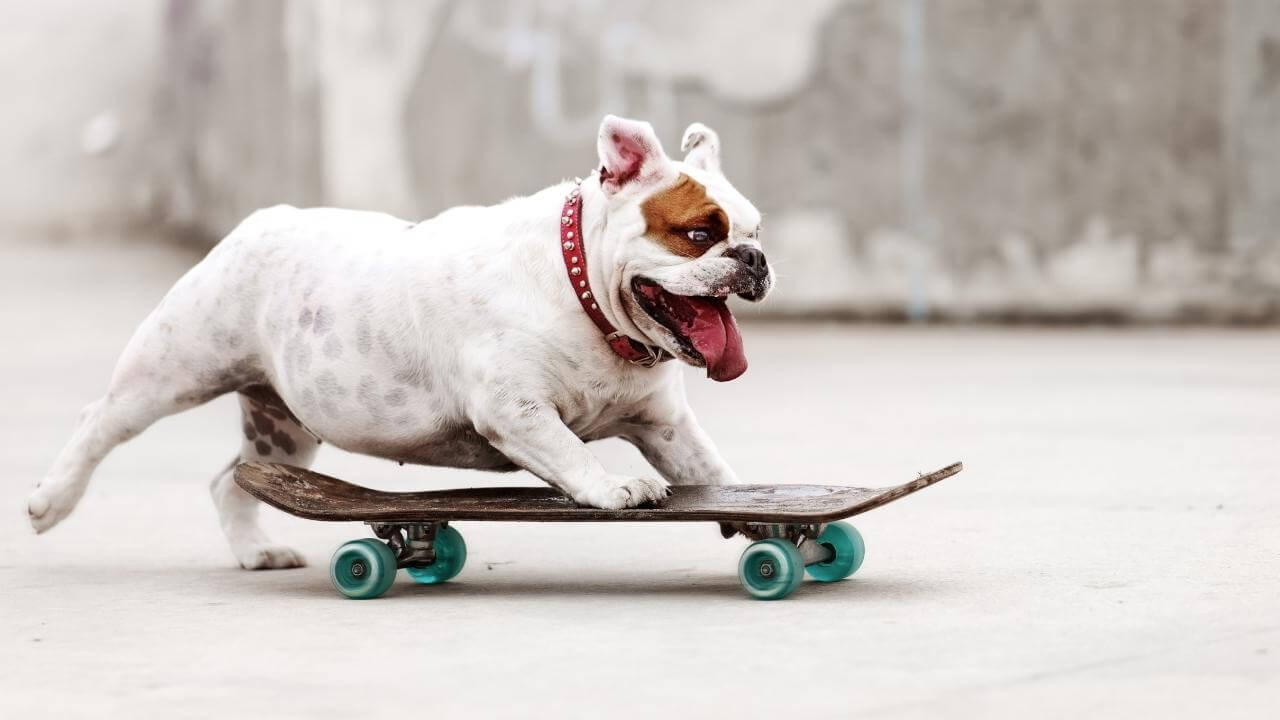If you just got an Australian Shepherd, I’m sure that ball of energy is the life of your house now.
From waking up to his kisses to sleeping after a tiring (and fun) day with him, everything is probably more fun than you thought.
However, even though you love their energy, a question that arises all the time is when does my Australian Shepherd calm down?
If you think that, you aren’t alone.
This is the question almost all Australian Shepherd owners have who are craving to relax a little after months of playing around with them.
Here’s a complete guide to answer all of your swarming questions and train him the right way.
So let’s paw right in!
[wpsm_toplist]
When Do Australian Shepherds Calm Down?
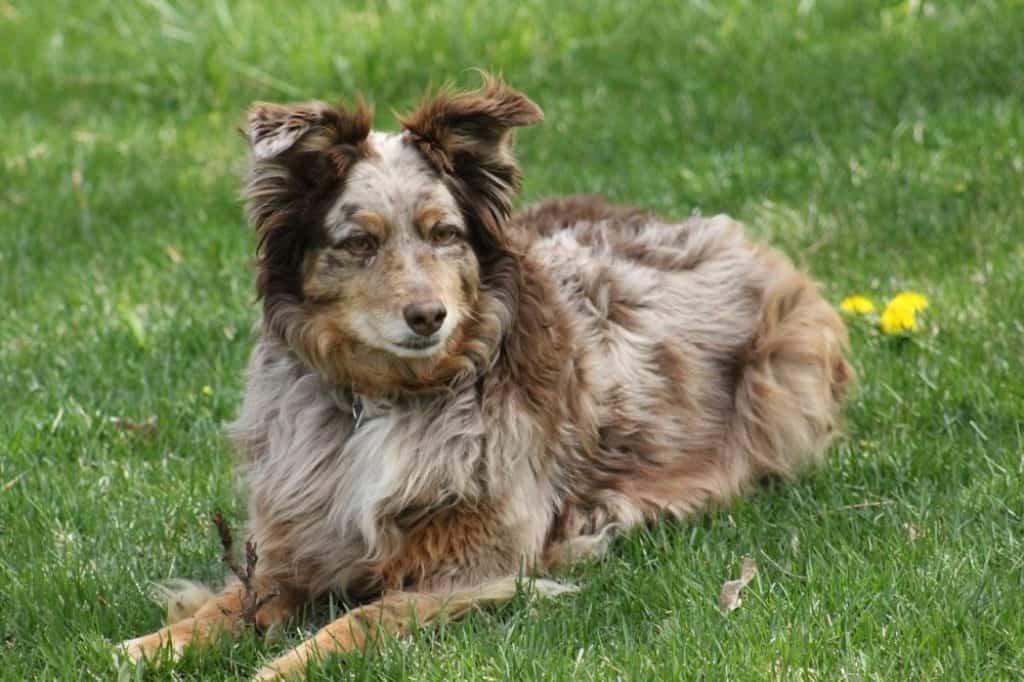
If we look at the general reports, most Australian Shepherds should start calming down at the age of two.
However, this isn’t the case with all dogs.
The age of maturity increases as they grow with age. As they become older, they become relatively less energized not to bug you when you are busy.
Here have been cases where these furry friends have taken 3 or even seven years to mature up!
Luckily Aussies have a life span of 13 to 15 years; this leaves them with a lot of time to see their energized and calm demeanor.
They won’t be completely quiet during this mature age but won’t play around as much as they do now.
On the other hand, few dogs have reportedly come with low energy when entering their owner’s house.
If you happen to experience the same situation, take him to a vet and make sure he isn’t suffering from anemia or any other deficiency.
Are Australian Shepherds Hyper Dogs?
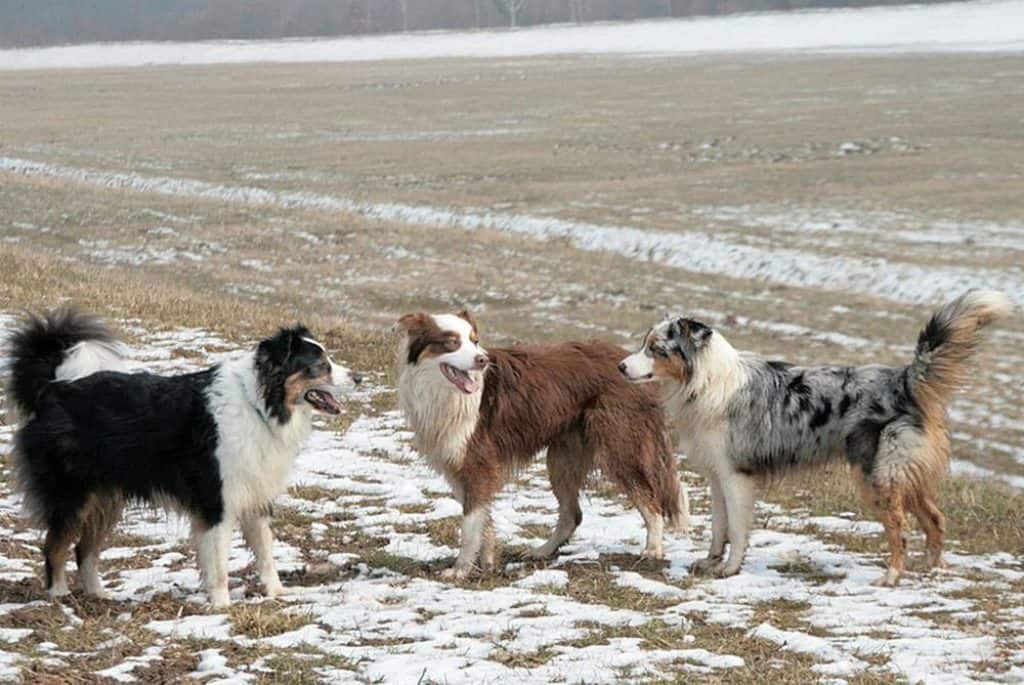
Before you decide to add a new Australian Shepherd into your house, you should equip yourself with an estimation of their energy levels.
I wouldn’t exactly call Australian Shepherds “hyper” but rather active as they tend to enjoy exercises, training, and active time with their owners.
One thing is for sure that they aren’t meant to be couch potatoes.
If you are getting an Australian Shepherd at home, they will require at least 2 hours of walking.
However, they do prefer running when opposed to walking.
If you fail to feed the activity they require, they might end up channeling this energy elsewhere and lead to destructive or nuisance behaviors like chewing, barking, or digging that might cause more harm than good.
How To Calm Down An Australian Shepherd?
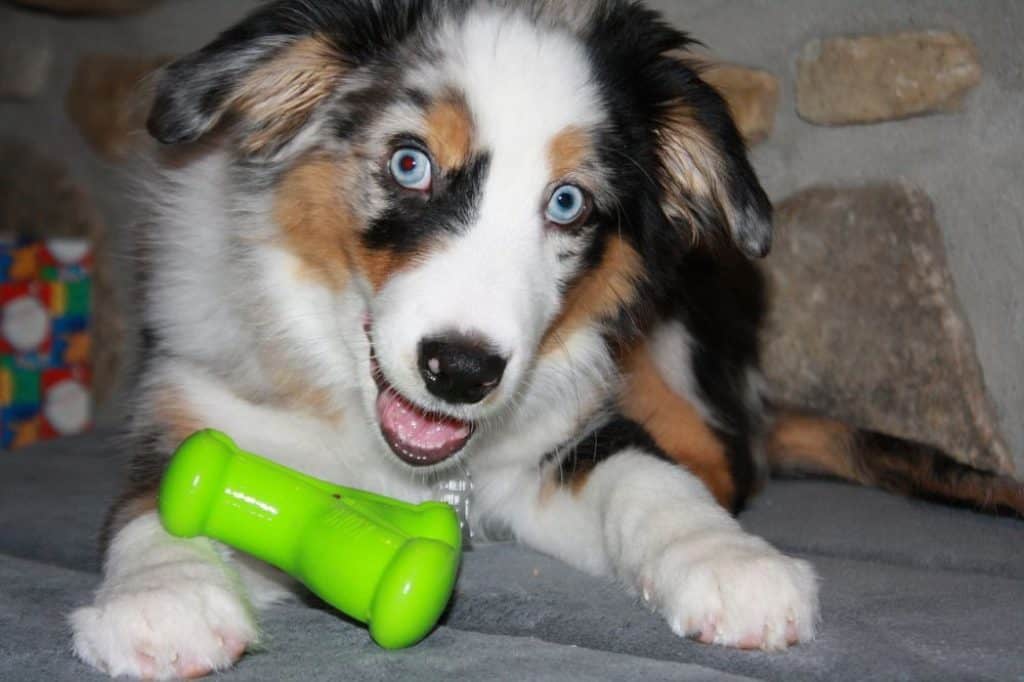
Your Australian Shepherd dog can’t help but be energetic throughout the day.
The key to calming them lies in tiring them out. You can do this through these ways:
Take Them To Walks
This can be a great way to drain up your fur buddy’s energy by the end of the day. Leash them up, take them to the nearest trail and walk for 2 to 3 hours.
Feel free to take breaks if you aren’t a big fan of walking this long.
Once he gets back home, you will get to see him curl up in his bed and sleep like a baby throughout the night.
Long walks won’t just calm your dog down but are an excellent way to relieve his stress, lower blood pressure and strengthen his bones.
You can always use it as a way to spend quality time that is impossible to get at home when he is too energized to sit and give some time to you.
Have Fun At The Beach
Beach days are a family’s favorite.
The next time you are packing to have a blast with your family at the beach, get your Australian Shepherd as well.
They will love the freedom to do anything and enjoy your hyped-up energy too. It can be an ideal way to get them back with calm energy and help them stay obedient.
This can be an easier way to have two to three hours of active sessions with your dog without having to tire yourself with them.
Why Are Australian Shepherds So Needy?
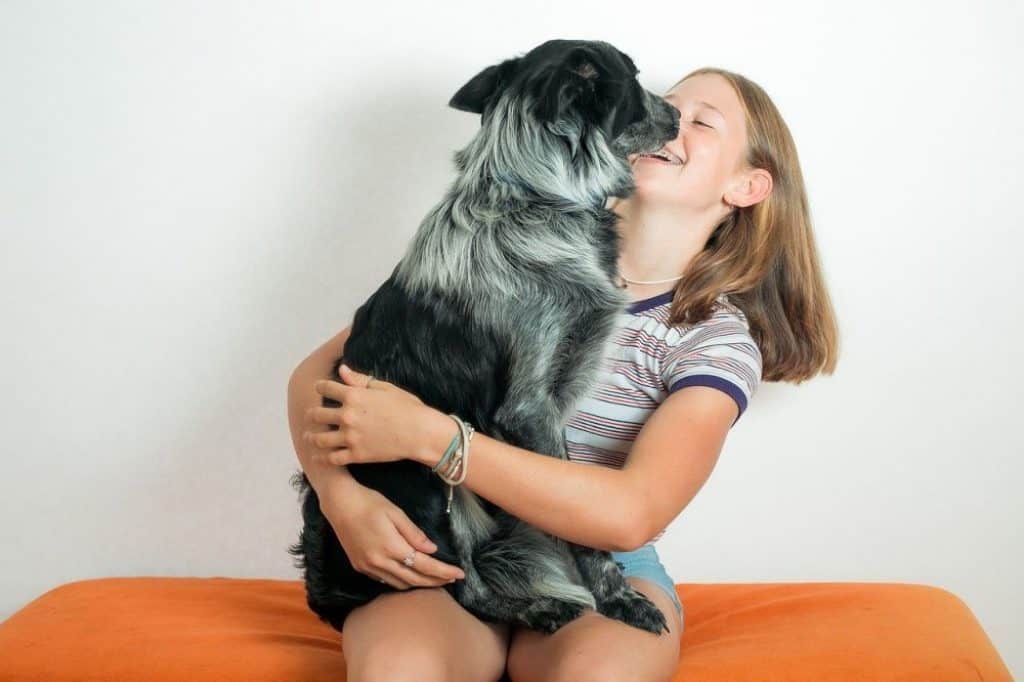
Okay, let’s admit it, Australian Shepherds can be clingy. As much as they love being outdoors, they also enjoy having a blast indoors as well.
As natural people-pleasers, Australian Shepherds crave human companionship and want to stay involved in any family activity that you may carry out.
However, it is understandable that work-life may demand you to have some time with yourself.
In this case, you can try counting on another family member, friend, or neighbor to take care of your dog for a few hours while you can enjoy some quality.
But in most cases, try to be around your dog as much as possible to satisfy their cravings and prevent separation anxiety with your dog.
Being away for long periods of time can also lead to a loud barker that can be a nuisance for the rest of your family and neighbors.
Therefore, training here can play a big role in helping them learn that discipline and stick to the rules.
How To Train An Australian Shepherd?
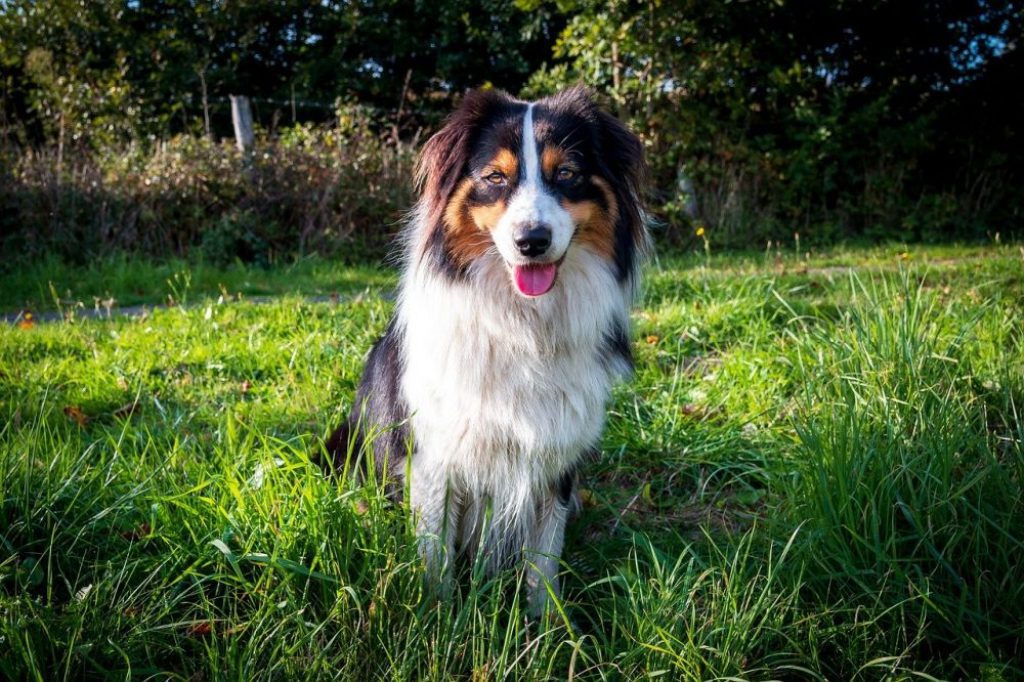
Considering how bred to be herding dogs, they naturally have a keen and intelligent mind to make them excellent trainees.
Before you begin training, bear in mind that the key to having productive training sessions is to keep incentives for good behavior and have consistency to get the best results.
Here are some of the ways you can train Australian Shepherds.
Nothing is more embarrassing than your dog barking at parties or when you are simply talking to your neighbor at the park.
Therefore, you should start training them to socialize at an early age of 7 weeks.
Between the age of 7 weeks and 3 months, they are likely to be more flexible and have the better learning power to adapt to your new techniques every day.
However, it doesn’t mean they won’t learn when they are older; it will just be a lot harder than doing it at an early age.
The best way to teach them to socialize is to start having a friendly atmosphere around your house.
Have parties, let them meet new people, or socialize during daily walks to help raise them in a social environment.
Remember, the environment is the best teacher, and that’s exactly the approach you want to go for here.
Exercise Ethics
Australian Shepherds are great with reward-based training. This is called positive reinforcement training that can promote good behavior during training sessions.
Equip yourself with your dog’s favorite treats to encourage them to praise and give their best in every session.
Instead of punishing them for their wrong behavior, start rewarding them in a good way to create a healthier environment.
[amazon box=”B076M7548D”]
This doesn’t just work well for training; you can also do this every time your dog does a good job at home by not jumping on the couches, barking, or sitting when asked.
These minor rewards can build up to make him more loyal to you over time.
Start With The Basics
Basics are one of the most underestimated parts of the whole training process.
This is because you need to build that basic communication to help them know what you are asking them.
So whenever you say something and your dog successfully fulfills it, give him [amazon link=”B076M7548D” title=”a treat” link_icon=”amazon” /].
You will eventually start to notice your dog sitting, walking, and stop barking at your commands. It’s completely alright if this stage takes more time than necessary.
A solid foundation can make the rest of the training a lot easier.
Don’t Switch Up Command Words
Unlike humans, they don’t really understand the language you speak. Therefore, try to avoid variations of the commands you say to your dog.
If the word “Sit” is used to make him sit, don’t experiment with new words as it would confuse him.
Another example can be saying “go to the bathroom” every time you want him to visit the restroom instead of using words like “toilet, potty, or washroom.”
Break Down Advanced Skills
If you plan to get your pet to learn an obstacle course, start by breaking down each obstacle and letting him ace that first.
Mastering one piece at a time and praising them with compliments and treats can be a fantastic way to keep him motivated to learn advanced skills effortlessly.
For instance, teach them how to run up the ramp, then jump and go through the tunnels to finally put together each obstacle and let them practice inflow.
Conclusion
Wrapping up the guide, now you must be equipped with all the knowledge about when Australian Shepherds calm down, why they act this way, how to calm them, and the right way to train them to avoid it in the first place.
Australian Shepherds can be a great addition to your family if you know how to handle their activity and control their sudden burst of energy.
With a little bit (or maybe a bit more) of practice in the initial stages and dedication, you can certainly make these Aussies your best pet known to date.
Good luck!

